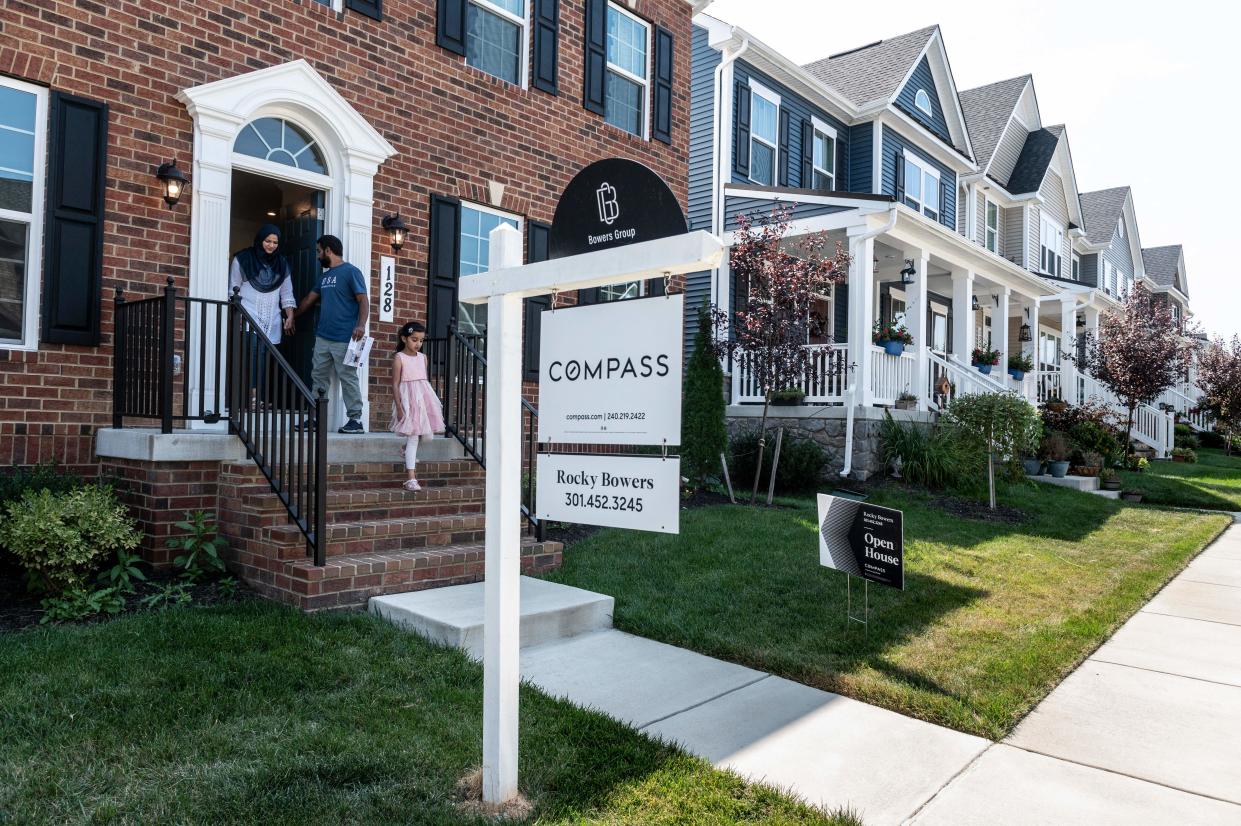Mortgage rates close in on 8% with no relief in sight
Mortgage rates increased again last week, closing in on 8% and convincing many homebuyers to give up on the market for now.
The average 30-year mortgage rate jumped to 7.79% from 7.63% the previous week, according to Freddie Mac on Thursday. The average borrowing rate has remained above 7% for 11 straight weeks and has risen eight weeks in a row.
To mitigate the sting of higher rates, homebuyers still in the market are gravitating toward incentives from homebuilders or are taking out adjustable-rate mortgages, or ARMs. But those alternatives may be tested as rates are expected to climb higher.
Read more: Types of mortgage loans: Which is best for you?
"Though high mortgage rates and still-high prices weigh on home shoppers, recent new home sales data shows that buyers are finding a way to navigate the challenging environment," Hannah Jones, senior economic research analyst at Realtor.com, said. But "the milestone of 8%-plus mortgage rates, like 5% Treasury yields, emphasizes the financial headwinds facing borrowers in today’s market."
For instance, the volume of mortgage applications for a home purchase dropped 2% week over week on a seasonally adjusted basis last week, the Mortgage Bankers Association (MBA) reported. The level is 22% lower than a year ago.
"Mortgage activity continued to stall, with applications dipping to the slowest weekly pace since 1995," Joel Kan, MBA's vice president, and deputy chief economist, said.
Read more: How to get a mortgage in 2023
More buyers turned to ARMs, which come with a lower initial rate. The share of ARM applications hit 9.5% of all applications, the highest level since November 2022.
MBA’s data showed that the average rate for the 5/1 ARM was 6.99%. This mortgage offers a fixed rate for the first five years of the loan and then adjusts higher or lower every year after, following a preset interest rate index.
Other buyers are considering the new home market, instead, where builders are offering a break on rates on mortgages originated through their sister lending companies. That’s helped to boost new home sales.
For example, PulteGroup (PHM) offers a permanent buydown of a buyer's mortgage rate to as low as 5.75%, much lower than the prevailing market rate. Between 80% and 85% of buyers in the third quarter chose incentives, PulteGroup CEO Ryan Marshall said this week on the company's latest earnings call.
Homebuilder Taylor Morrison has found similar success with these perks, reporting results that exceeded expectations.
"Over the last several quarters, we have expanded our incentive programs with the purchase of forward commitment below market interest rates," Sheryl Palmer, chairman of Taylor Morrison, said during the company's latest earnings call this week. "These rates can be used on spec homes with quick move-in dates, as well as with to-be-built homes when combined with an extended rate lock for up to one year, offering permanent interest rate security."
Builders are also benefiting from the dearth of supply among existing homes, another consequence of higher mortgage rates. Homeowners aren’t interested in selling their home because they would trade in a low rate on their current mortgage for a much higher one to finance a move-up purchase.
At the end of September, the number of for-sale properties was at the lowest level for the month since 1999, the NAR said last week. Inventory for single-family homes was at the lowest count since 1982.

Where housing activity goes next depends on what happens with mortgage rates.
The yield on the 10-year Treasury — which fixed mortgage rates follow — momentarily surpassed 5% this week for the first time in 16 years. Concerns about the economy, geopolitical worries, and the Federal Reserve’s insistence that its benchmark rate will remain higher for longer have all propped up the 10-year Treasury yield.
Read more: Mortgage rates at 20-year high: Is 2023 a good time to buy a house?
"There's so many moving pieces right now that there's instability in the markets, there's no telling where [rates] are going to go," Nathaniel Bittman, a mortgage professional and president of the Florida Association of Mortgage Professionals, told Yahoo Finance before the release of mortgage rates on Thursday.
"I do believe that we're going to remain in a higher rate environment for a while, though," he said.
Rebecca Chen is a reporter for Yahoo Finance and previously worked as an investment tax certified public accountant (CPA).
